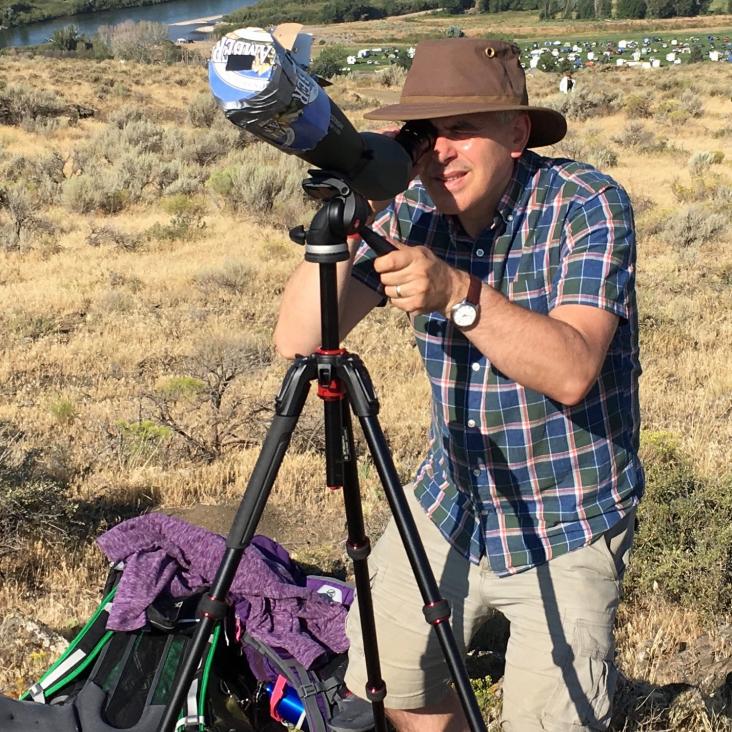Gain stabilization for radio intensity mapping using a continuous-wave reference signal
Monthly Notices of the Royal Astronomical Society Oxford University Press 489:1 (2019) 548-554
Abstract:
Stabilizing the gain of a radio astronomy receiver is of great importance for sensitive radio intensity mapping. In this paper we discuss a stabilization method using a continuous-wave reference signal injected into the signal chain and tracked in a single channel of the spectrometer to correct for the gain variations of the receiver. This method depends on the fact that gain fluctuations of the receiver are strongly correlated across the frequency band, which we can show is the case for our experimental set-up. This method is especially suited for receivers with a digital back-end with high spectral resolution and moderate dynamic range. The sensitivity of the receiver is unaltered except for one lost frequency channel. We present experimental results using a new 4–8.5 GHz receiver with a digital back-end that shows substantial reduction of the 1/f noise and the 1/f knee frequency.The C-Band All-Sky Survey (C-BASS): constraining diffuse Galactic radio emission in the North Celestial Pole region
Monthly Notices of the Royal Astronomical Society Oxford University Press 485:2 (2019) 2844-2860
Abstract:
The C-Band All-Sky Survey (C-BASS) is a high sensitivity all-sky radio survey at an angular resolution of 45 arcmin and a frequency of 4.7 GHz. We present a total intensity map of the North Celestial Pole (NCP) region of sky, above declination >+80°, which is limited by source confusion at a level of ≈0.6 mK rms. We apply the template-fitting (cross-correlation) technique to WMAP and Planck data, using the C-BASS map as the synchrotron template, to investigate the contribution of diffuse foreground emission at frequencies ∼20–40 GHz. We quantify the anomalous microwave emission (AME) that is correlated with far-infrared dust emission. The AME amplitude does not change significantly (<10 per cent) when using the higher frequency C-BASS 4.7 GHz template instead of the traditional Haslam 408 MHz map as a tracer of synchrotron radiation. We measure template coefficients of 9.93 ± 0.35 and 9.52±0.34 K per unit τ353 when using the Haslam and C-BASS synchrotron templates, respectively. The AME contributes 55±2μK rms at 22.8 GHz and accounts for ≈60 per cent of the total foreground emission. Our results show that a harder (flatter spectrum) component of synchrotron emission is not dominant at frequencies ≳5 GHz; the best-fitting synchrotron temperature spectral index is β = −2.91 ± 0.04 from 4.7 to 22.8 GHz and β = −2.85 ± 0.14 from 22.8 to 44.1 GHz. Free–free emission is weak, contributing ≈7μK rms (≈7 per cent) at 22.8 GHz. The best explanation for the AME is still electric dipole emission from small spinning dust grains.The C-Band All-Sky Survey (C-BASS): digital backend for the northern survey
Monthly Notices of the Royal Astronomical Society Oxford University Press 484:4 (2019) 5377-5388
Abstract:
The C-Band All-Sky Survey (C-BASS) is an all-sky full-polarization survey at a frequency of 5 GHz, designed to provide data complementary to the all-sky surveys of WMAP and Planck and future CMB B-mode polarization imaging surveys. We describe the design and performance of the digital backend used for the northern part of the survey. In particular, we describe the features that efficiently implement the demodulation and filtering required to suppress contaminating signals in the time-ordered data, and the capability for real-time correction of detector non-linearity and receiver balance.The C-Band All-Sky Survey (C-BASS): design and capabilities
Monthly Notices of the Royal Astronomical Society Oxford University Press 480:3 (2018) 3224-3242
Abstract:
The C-Band All-Sky Survey (C-BASS) is an all-sky full-polarization survey at a frequency of 5 GHz, designed to provide complementary data to the all-sky surveys of WMAP and Planck, and future CMB B-mode polarization imaging surveys. The observing frequency has been chosen to provide a signal that is dominated by Galactic synchrotron emission, but suffers little from Faraday rotation, so that the measured polarization directions provide a good template for higher frequency observations, and carry direct information about the Galactic magnetic field. Telescopes in both northern and southern hemispheres with matched optical performance are used to provide all-sky coverage from a ground-based experiment. A continuous-comparison radiometer and a correlation polarimeter on each telescope provide stable imaging properties such that all angular scales from the instrument resolution of 45 arcmin up to full sky are accurately measured. The northern instrument has completed its survey and the southern instrument has started observing. We expect that C-BASS data will significantly improve the component separation analysis of Planck and other CMB data, and will provide important constraints on the properties of anomalous Galactic dust and the Galactic magnetic field.The STRIP instrument of the Large Scale Polarization Explorer: microwave eyes to map the Galactic polarized foregrounds
SPIE, the international society for optics and photonics 10708 (2018) 107081g


